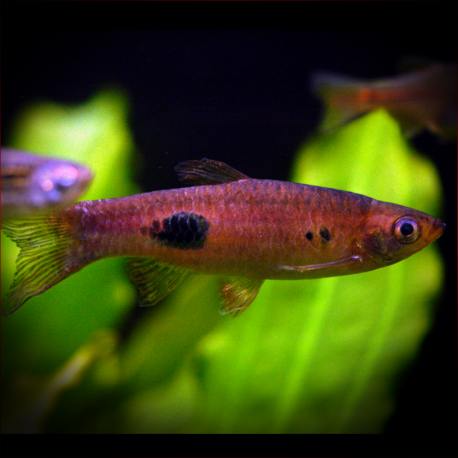More info
Datasheet
| Minimum Tank Size | 113 litres / 29.85 US gallons |
| Maximum Size | 7.0cm / 2.76inches |
| Temperature | 23°C / 73.40°F - 28°C / 82.40°F |
| Hardness | 2-10ºdH |
| pH | 5.0-7.0 |
Behavior:
The Rasbora kottelati species is best suited for a peaceful community tank environment, particularly with Southeast Asian/Indian species like similarly-sized Rasbora and Puntius, botiid/cobitid loaches, and Trichogaster gouramis. It is advised to keep at least 8-10 specimens together to minimize aggression amongst males. A decent-sized group not only reduces stress but also enhances natural behavior and color display as males compete for female attention.
Feeding and Diet:
This species primarily feeds on aquatic and terrestrial invertebrates in the wild. In captivity, they readily accept a varied diet consisting of live and frozen foods like bloodworms, Daphnia, and Artemia, as well as high-quality dried flakes and granules. Offering a mix of these food types will help maintain their vibrant colors and overall health.
Reproduction & Dimorphism:
Breeding the Rasbora kottelati in captivity is feasible, with the species being egg-scattering continuous spawners that show no parental care. To improve fry production, setting up separate breeding containers with suitable water parameters, dim lighting, and spawning triggers is recommended. The fry can be fed with small live foods like Paramecium or Artemia nauplii post-hatching to ensure proper growth and development. Mature females are distinguishable by their rounder shape compared to males.
Habitat and Distribution:
Endemic to Borneo, the Rasbora kottelati is found in the northern Sarawak region of Malaysia and Brunei Darussalam. In their natural habitat, they inhabit blackwater streams and rivers associated with ancient forest peat swamps. These environments are characterized by soft, acidic water with a pH as low as 4.0, dim lighting due to the forest canopy, and substrates littered with fallen leaves, twigs, and branches. Conservation efforts are crucial as these biotopes are threatened by human activities like plantation and development.
Aquarium Setup:
For an ideal aquarium setup, a dark substrate with live plants and driftwood recreates a natural biotope environment. Incorporating dried leaf litter like beech, oak, or Ketapang almond leaves enhances the aesthetics and provides shelter for the fish. Adding peat fiber or a net bag of peat in the filter can simulate blackwater conditions beneficial for these species. Maintaining dim lighting and utilizing floating vegetation for light diffusion are essential. Regular water maintenance is vital as Rasboras are sensitive to fluctuations in water quality.

